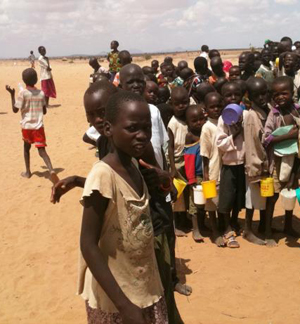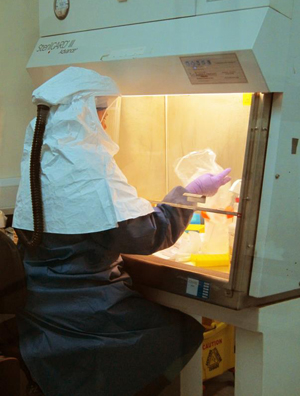 |
T A B L E O F C O N T E N T S
M A Y / J U N E 2 0 1 6
Volume 22, Number 5/6
DOI: 10.1045/may2016-contents
ISSN: 1082-9873
E D I T O R I A L
Stewardship
Editorial by Laurence Lannom, Corporation for National Research Initiatives
A R T I C L E S
Scientific Stewardship in the Open Data and Big Data Era — Roles and Responsibilities of Stewards and Other Major Product Stakeholders
Article by Ge Peng, Cooperative Institute for Climate and Satellites-North Carolina (CICS-NC), North Carolina State University and NOAA's National Centers for Environmental Information (NCEI), Nancy A. Ritchey, NCEI, Kenneth S. Casey, NCEI, Edward J. Kearns, NCEI, Jeffrey L. Privette, NCEI, Drew Saunders, NCEI, Philip Jones, STG, Inc., Tom Maycock, CICS-NC/NCEI, and Steve Ansari, NCEI
Abstract: Ensuring and improving quality and usability is an important part of scientific stewardship of digital environmental data products, but the roles of the responsible parties — those who manage quality and usability — have been evolving over time and have not always been clearly defined. Recognizing that in the Open Data and Big Data era, effective long-term scientific stewardship of data products requires an integrated and coordinated team effort of experts in multiple knowledge domains — data management, science, and technology — we introduce the following stewardship roles for each of these domains: data steward, scientific steward, and technology steward. This article defines their roles and high-level responsibilities as well as the responsibilities of other major product stakeholders, including data originators and distributors. Defining roles and formalizing responsibilities will facilitate the process of curating and communicating quality information to users. Clearly defined roles will allow effective cross-disciplinary communication and better resource allocation for data stewardship, supporting organizations in meeting the challenges of stewarding digital environmental data products in the Open Data and Big Data era.
Institutional Repositories: Home for Small Scholarly Journals?
Article by Julie Kelly and Linda Eells, University of Minnesota
Abstract: Small scholarly journals, particularly those published by academic societies, may not be positioned in a way that maximizes their discoverability and use. Many are on less-than-robust platforms and others are maintained by commercial publishers which means articles are either behind a pay wall or authors face steep article processing charges. We suggest that a better solution for these small journals would be for institutional repositories (IRs) to begin including them. This would mean a change in policy for many IRs, which currently limit submissions to work by their authors at their universities. Individual institutions could focus on one or two subject areas and work with local faculty members and professional societies to identify potential journals. While subject repositories may seem like a more appropriate solution, they only exist in a few disciplines. AgEcon Search, a subject repository serving the agricultural and applied economics community, is cited in this article as an example of a repository that includes numerous small scholarly journals.
Customization of Open Source Applications to Support a Multi-Institution Digital Repository Using DSpace
Article by Youssef Benchouaf, Daniel Hamp and Mark Shelstad, Colorado State University
Abstract: Colorado State University, along with seven other academic institutions and a university press, migrated out of DigiTool to DSpace in the fall of 2015. This article will analyze the customizations made to the application, including assigning multiple handles; automating ingest of electronic theses and dissertations; mapping of multiple schema (METS, MODS, MARC) to Dublin Core; modifying the Simple Archive Format for ingest; Kaltura for ingesting bulk video submissions; and harvesting the OAI feed for CSU's web site, discovery layer, and other repositories. A number of processes for ingest have been automated or made available to non-system staff, resulting in significant cost and time savings.
Linking Publications and Data: Challenges, Trends, and Opportunities
Conference Report by Matthew S. Mayernik and Jennifer Phillips, NCAR/UCAR Library, National Center for Atmospheric Research, University Corporation for Atmospheric Research; Eric Nienhouse, Computational and Information Systems Lab, National Center for Atmospheric Research, University Corporation for Atmospheric Research
Abstract: Many interrelationships exist between research articles, data, software, and other resources used to produce scientific findings. A number of challenges, however, impede efforts to implement, standardize, and institutionalize cross-links between scholarly resources. This report outlines findings from a workshop titled "Data & Publication Linking" held January 5, 2016 in Washington, D.C., funded by the U.S. National Science Foundation's (NSF) Open Access & Open Data initiative, and the NSF's EarthCube initiative. The workshop convened a discussion on the challenges and opportunities for cross-linking data and publication repositories. It brought together nineteen researchers and stakeholders from a range of sectors including data repositories, scholarly publishers, academic libraries, and scholarly research service providers. In this report, we present a diversity of perspectives and initiatives that can inform community-based solutions to scholarly resource cross-linking challenges.
Report from the Sixth Annual DuraSpace Member Summit, March 2016
Conference Report by Carol Minton Morris, DuraSpace
Abstract: The Sixth Annual DuraSpace Member Summit was held March 16 - 17, 2016 at the Cosmos Club in Washington, DC. There were both formal and informal discussions about the various open source projects that DuraSpace members participation in, the current state of the scholarly ecosystem, opportunities on the horizon, and the announced intent to merge DuraSapce and LYRASIS organizations.
N E W S & E V E N T S
In Brief: Short Items of Current Awareness
In the News: Recent Press Releases and Announcements
Clips & Pointers: Documents, Deadlines, Calls for Participation
Meetings, Conferences, Workshops: Calendar of Activities Associated with Digital Libraries Research and Technologies
|
 |
F E A T U R E D D I G I T A L
C O L L E C T I O N


A food distribution waiting area organized due to a nutritional health emergency, which was located in Wajir County, Kenya.
[Public domain images.]

A laboratory technician seated at a Baker SterilGARD®III Advance° Biological Safety Cabinet, while working with samples that were part of the country's July - August, 2012 Ebola outbreak investigation.
[Public domain image.]
In this issue, D-Lib Magazine features the Public Health Image Library (PHIL). Much of the information critical to the communication of public health messages is pictorial rather than text-based. Created by a Working Group at the Centers for Disease Control and Prevention (CDC), the PHIL offers an organized, universal electronic gateway to CDC's pictures.
The Centers for Disease Control and Prevention (CDC) is the health protection agency of the United States, and its scientists and disease detectives work around the world to track diseases, research outbreaks, and respond to emergencies of all kinds. Its mission is: "keeping America safe from health, safety, and security threats, both foreign and domestic. Whether at home or abroad, are chronic or acute, curable or preventable, human error or deliberate attack, CDC fights disease, and supports communities and citizens to do the same. CDC is the nations's health protection agency — saving lives, protecting people from health threats, and saving money through prevention."
The PHIL welcomes public health professionals, the media, laboratory scientists, educators, students, and the worldwide public to use its material for reference, teaching, presentation, and public health messages. The content is organized into hierarchical categories of people, places, and science. Collections within PHIL feature: Influenza, Natural Disasters, Environmental Health, Bioterrorism, EM Imagery, Everyday Activities, Health Behaviors, Public Health in Action, Laboratory Science, and Developmental Milestones. It also presents an Image of the Day, which is chosen from the PHIL database on a random basis and is changed every 24 hours.
D - L I B E D I T O R I A L S T A F F
Laurence Lannom, Editor-in-Chief
Allison Powell, Associate Editor
Catherine Rey, Managing Editor
Bonita Wilson, Contributing Editor
|